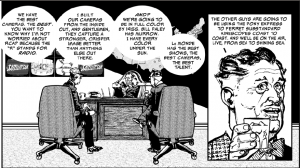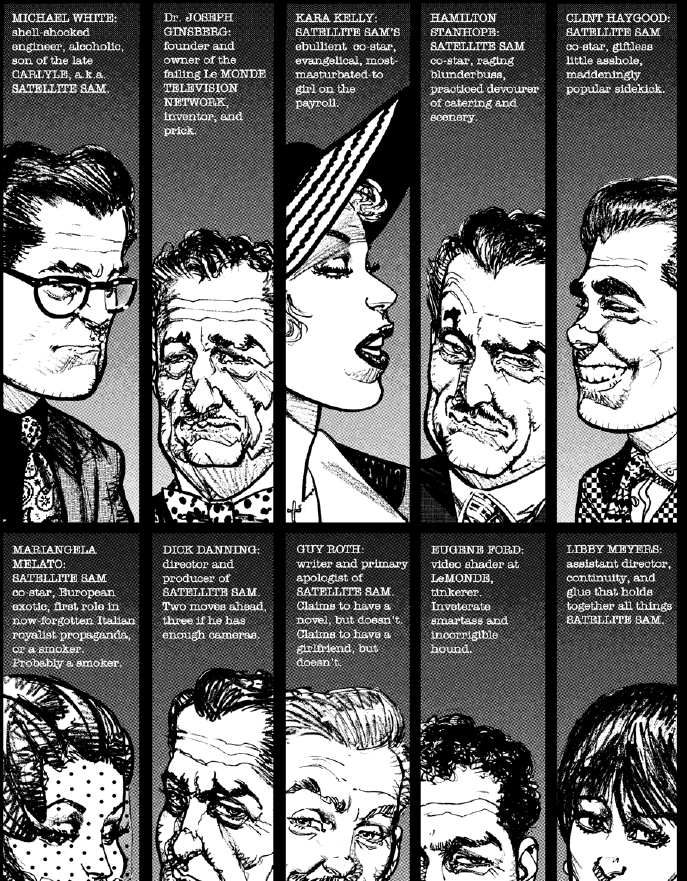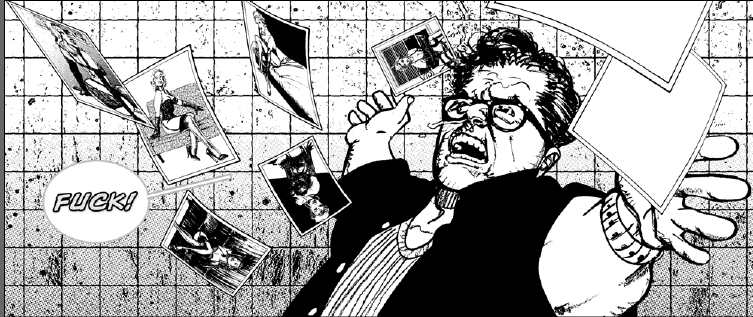I’m a history buff that has a huge breadth of knowledge. I know a bit about nearly every period in history and I know more than a bit in subjects that fascinate me. I’ve considered media history to be one of those areas where I’ve gone in pretty deep. I know about the radio wars and that ABC was spun off from NBC because of antitrust concerns. I know that cable TV was originally just a way for people in the boonies to get the over the air channels blocked by mountains and other geographic features. I know that TV was originally filmed live and that I Love Lucy was one of the first TV shows to record the episodes and ended up birthing syndication. The commercials were also done live and that’s the whole point of the Vitameatavegimin episode. What I didn’t know until I recently heard an episode of WNYC’s On The Media is that there was a fourth TV station way before Fox. This TV station was called The Dumont Network and it was directly responsible for The Honeymooners. In the same way that The Simpsons was born from The Tracy Ulman Show, The Honeymooners was born on Cavalcade of Stars which aired on The Dumont Network. This OTM segment also revealed that The Dumont Network invented daytime television. NBC, ABC, and CBS also owned radio stations and wanted people to listen to the radio during the day so they didn’t have daytime programming. The Dumont Network didn’t have radio stations, so they came up with the talk show and many other staples of daytime TV. They even invented a proto-PBS with a program that was supposed to entertain your kids and then make a loud sound when that was done so you would go and get your kids again.

Matt Fraction re-imagines The Dumont Network as LeMonde so he can have a little more leeway with history. But the basic elements are the same. The head of the studio is just a technical tinkerer who ends up creating innovative TV technology, but doesn’t have the clout to use it to his advantage. He is also fighting with Congress to get more access to the airwaves. Unfortunately, in our world, that didn’t work out for them and it was the ultimate death of the network. It wouldn’t be the first time the best technology didn’t win – look at Amiga or BeOS. Knowing that explains a lot of the non-noir aspects of the story. Fraction is both diving deep into the history of television and giving us a noir drama. It’s Mad Men, but about the TV network. You get to see the inner workings of the TV station in the 1950s. That includes obscure politics about the FCC and learning about the technology that enabled TV to work the way it does today. It also includes seeing the crew scramble due to the fact that TV was live back then. When the titular character doesn’t show up, the rest of the actors have to adlib, including by extending a commercial break. By the end of the first two issues Fraction has done a great job with setting, but we’ve barely made any progress whatsoever on his father’s murder or or even much about any of the characters. We know a lot about their world, but not much about them. Perhaps that’s why Fraction takes a page in the second issue to give biographies of each of the characters that saves him from some potentially awkward-sounding dialogue to establish these facts.

The text of these bios displays the typical Matt Fraction humor, but it also displays the biggest problem I have with the series. While Chaykin’s art is great and conveys emotion well, at least three of these guys look exactly the same to me. It makes it really hard to follow the story and that’s compounded by the fact that since it’s in black and white it’s not as though I can just look for the dude in the green suit each time. The first issue has Michael White find out that Carlyle White, the main character of the TV show Satellite Sam, had a bunch of photos of women in pinup poses. The second issue has Michael confront one of the women in the photos, who happens to work on the TV network. Ultimately, that’s it for now, story-wise.
I think the most compelling aspect of Satellite Sam thus far is the shattering of the innocence of the 1950s. Sure, this is a fictional story, but it’s rooted in the fact that television was a skeezy place to work in, even then. The world wasn’t all Leave it to Beaver, no matter what some people try to tell themselves. It’s interesting to see just how dark things could get back them. It’s also a wildly different Fraction than the happy-go-lucky tone he’s struck on most of his Marvel books and appears to have for Sex Criminals. This is a very different Fraction – the humor and sarcasm are there, but they’re much, much darker than you’re used to. Right now I’m not quite as excited for this book as I was when it was first announced, but that doesn’t mean that the book can’t eventually win me over as the story progresses. At the very least it has the history aspect to pull me in on. Still, if you’re thinking of getting into Satellite Sam because of exposure to Fraction’s previous work – be forewarned this is a whole different side of his writing abilities.
Satellite Sam: written by Matt Fraction with art by Howard Chaykin. Get it on Comixology here.
